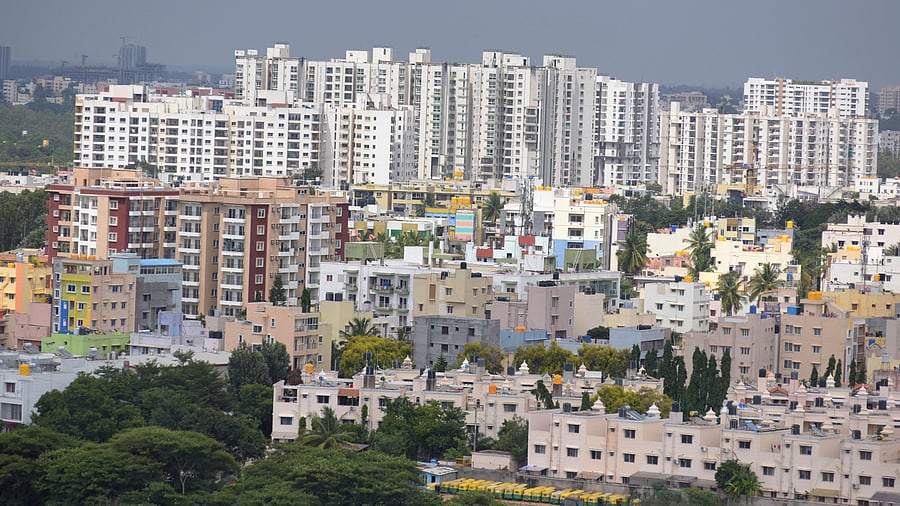
The new bill will allow developers to construct additional floors than originally permissible by a premium. Representational image.
Credit: DH File Photo
Civic activists, engineers and urban planners have expressed concern about the new ‘premium’ FAR bill that allows developers in Bengaluru to construct additional floors than originally permissible in buildings by paying a premium.
While there is no clarity yet on the finer details of the bill, experts believe a strategic plan to avoid overburdening congested areas and better management of resources is pertinent.
Srinivas Alavilli, civic activist, explains that compliance with Transit Oriented Development (TOD) policy is paramount. The policy is designed to increase population density along public transport corridors. “Vertical growth is a desirable feature to increase density but it should be compliant with the new TOD policy that envisions equitable and inclusive access to public transport and amenities, employment and education along the metro and suburban corridors,” he says.
Restriction on funds
Though the deputy CM stated that the funds raised through premium FAR will be spent on local area development, it needs to be strictly ring-fenced, Alavilli shares. He adds that such bills should have been discussed in the BBMP Council before being tabled in the State assembly.
According to Kathyayini Chamaraj, activist and writer, it would be wise to instead focus on boosting investment in other parts of Karnataka. “Bengaluru is bursting at the seams already. We are facing several other issues caused by climate change. Should the attempt be to enable more citizens to come to Bengaluru? Or should we distribute investment to other cities so that development becomes more widespread across
Karnataka?” she asks. She is concerned that, “it is becoming a pattern in government to allegedly ‘raise resources for development’ by allowing citizens to go beyond the restrictions placed by law”.
While Sumedha Jain, an urban planner, believes it is not necessarily a bad move, she says a comprehensive city-level strategy for FAR distribution is needed. “It calls for a lot of redevelopment. The infrastructural capacities would need to be studied and augmented carefully so that the locations can accommodate the needs arising from creation of the extra built up space,” she tells Metrolife.
Out and not up
The city should be spreading out, and not moving up, believes Rajkumar Dugar, founder, Citizens for Citizens. Unlike Mumbai or Chennai, Bengaluru is surrounded by empty space into which the city can expand. “This is not a pro-people measure. Yes, it will get more money into the government kitty. But this is not the right way to do it,” he explains. Such a step will affect citizens’ quality of life. “This means more population, more traffic and more pollution. We are already facing a massive water crisis,” he adds.
One needs to carefully consider other consequences like overburdened sewage and drainage systems. “In Vasanth Nagar, where I live, a number of three- to four-storey buildings have come up in the past year or so. They are packed with PG accommodations. This has resulted in sewage lines getting blocked regularly, which was not the case earlier,” Dugar shares.
What happened
On Tuesday, the Karnataka assembly passed the premium FAR (floor area ratio) bill or the Karnataka Town and Country Planning (Amendment) Bill. This will allow developers to add more floors to their properties by
paying the government a premium — 40 per cent of the guidance value.
Sumedha points out that in Bengaluru, FAR is calculated by taking into consideration the road width (the property is on) and plot size. Each city has a different standard for prescribed FAR and tools for increasing the
built-up area. Indian cities have always been low for FARs.